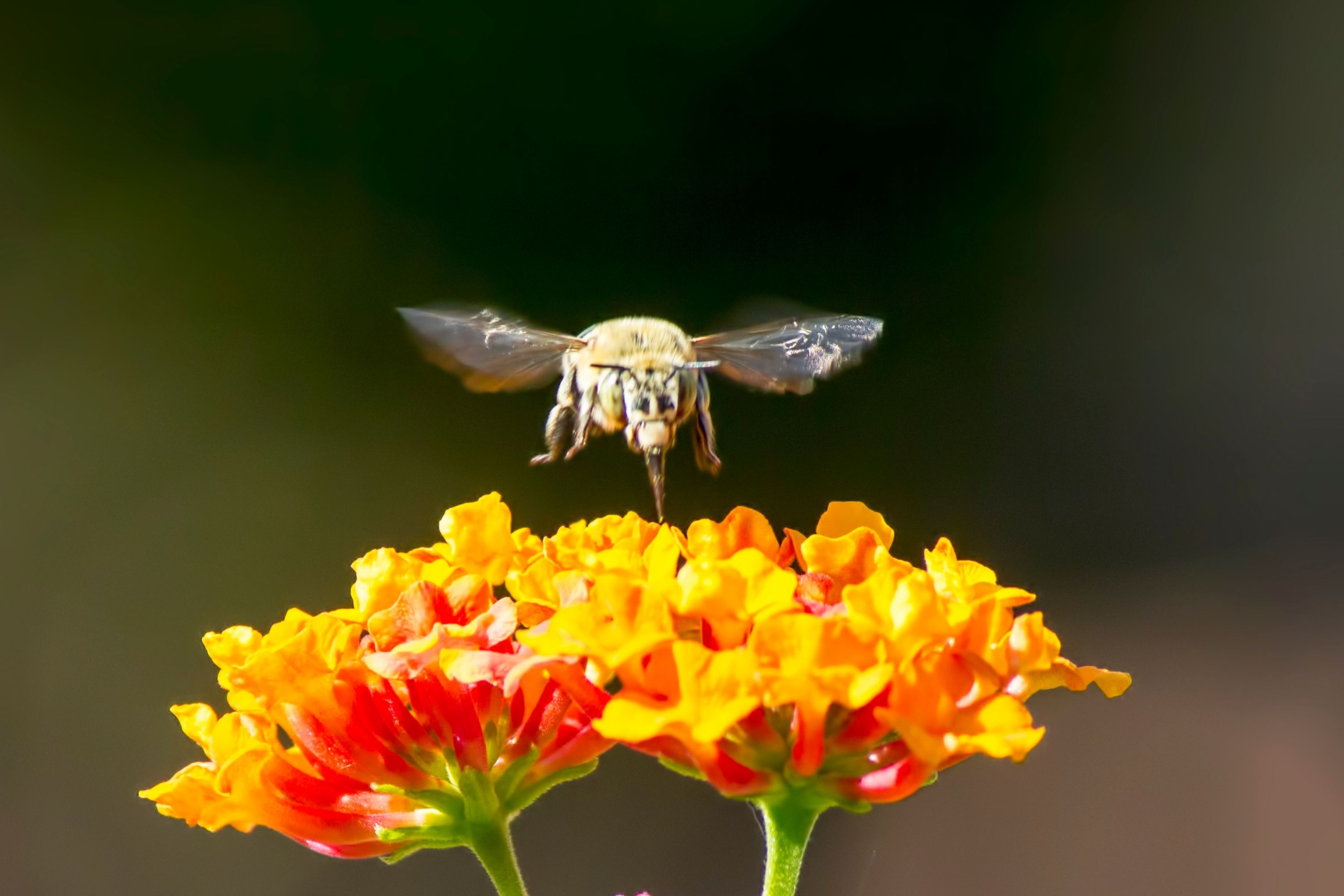Southeastern blueberry bee
(Habropoda laboriosa)

Description
Habropoda laboriosa, the southeastern blueberry bee, is a bee in the family Apidae. It is native to the southeastern United States. It is regarded as the most efficient pollinator of southern rabbiteye blueberries, because the flowers require buzz pollination, and H. laboriosa is one of the few bees that exhibit this behavior. It is active for only a few weeks of the year, while the blueberries are in flower during early spring, when the temperature is warm and humid. H. laboriosa are solitary bees that live alone but nest in close proximity with other nests of their species. They have similar features to bumble bees, but they are smaller in size compared to them. H. laboriosa are arthropods so they have segmented bodies that are composed of the head, thorax, and abdomen. H. laboriosa are solitary bees so they prefer to live alone but may be in close proximity to other nests. They dig their own tunnels in the ground that is a little wider than their bodies, and they may do it with the company of their own species.Usually, they choose spots where there is direct sunlight and low chances of flooding. Since they are solitary bees, the mother bee only provides food and nutrients to their own brood. Blueberry bees are only active 3-5 weeks of the year and only produce one generation of offspring per year. They often resemble bumble bees, but are smaller in size. There are differences body size of the female versus male H. laboriosa. Females range from the lengths of 15.5 mm to 16mm whereas males are 13mm to 14mm in length. Females have a completely black head; in contrary, males are black but with a yellow clypeus. H. laboriosa is native to the southeastern United States and are found in warm, humid conditions. They are often found nesting 33cm to 71cm in the ground, in moderately dry and sandy soils in southeastern United States, ranging from North Carolina to Florida. They are solitary ground nesting bees, and they prefer soil that is covered by leaf litter with low moisture, so there would be a lack of roots near their nests to keep the soil relatively dry. Under these leaf litters are hidden burrows which connects to tunnels that can be 20cm long leading to their nests. If a nest has been invaded or disturbed by other organisms, often the bees will abandon it to find a new area nest. For example, it is common for ant species such as Iridomyrmex humilis to invade open nesting sites which results in nest abandonment.
Taxonomic tree:







